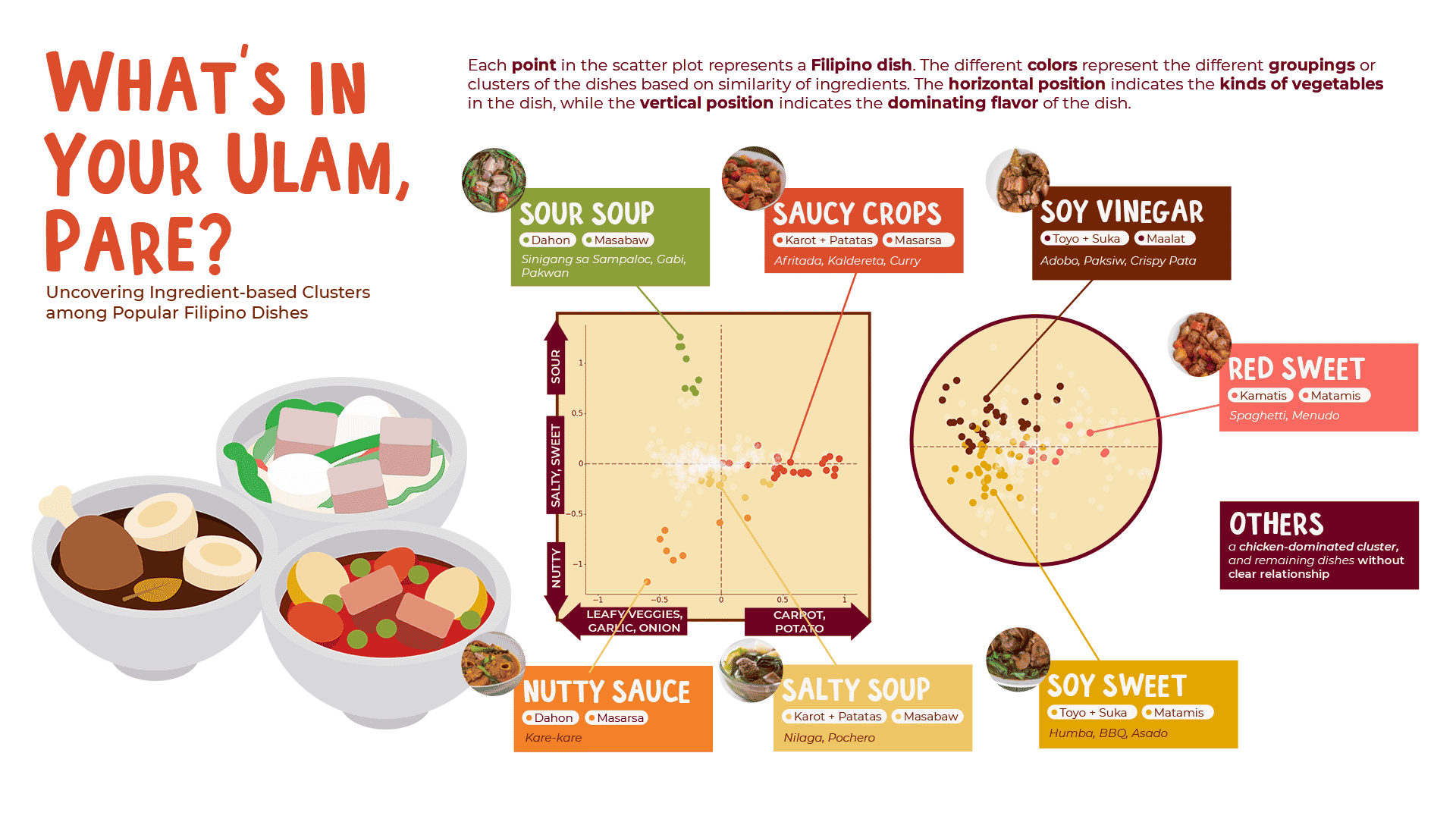Abstract
Inspired by the ambiguity surrounding the Menudo-Afritada-Caldereta-Mechado debate, our team performed dimensionality reduction and clustering methods on Panlasang Pinoy’s recipes to understand our very own Filipino dishes from an ingredient-list standpoint. Through singular value decomposition (SVD), the natural combinations of ingredients used when cooking Filipino dishes were identified and were subsequently used in creating the ulam clusters. Out of all the clustering methods explored, Ward’s provided the best visual and domain knowledge interpretation while still retaining parsimony. Overall, this study offers two sets of findings: (1) ingredient-based clusters of Filipino dishes and their corresponding interpretation, and (2) the data-driven definition of a Filipino pantry, which houses easily accessible ingredients that are assured to produce a Filipino favorite every time it is used.
The team discovered seven main ulam clusters: “Sour Soup” cluster or the Sinigang cluster has a soup with a sour taste and contains leafy vegetables and beans. “Saucy Crops” cluster are dishes with tomato or coconut milk-based sauce with potatoes and carrots. “Salty Soup” is characterized by the salty soup taste and usually comes with leafy vegetables, potatoes, and carrots. “Nutty Sauce” is characterized by its peanut-y taste and usually comes with leafy vegetables and eggplant. “Soy Vinegar” comes with soy and vinegar-based sauce or a dip made from the same condiments. “Red Sweet” uses Pinoy-style sauces and banana ketchup as the base of the sauce. “Soy Sweet” has sauces that are soy and sugar-based. As the group interpreted the dishes based on how they were grouped, we also gathered ingredients that were present in almost all clusters, put them together, and finally unlocked the data-driven definition of the Filipino pantry.
What started as supposedly just a fun activity to do turned into a full-blown project for us. As we got the results, practical applications and potential business values are apparent. For the Filipino household, families can identify cost-efficient combination of dishes that use the same ingredients to serve at home or during occasions. For the food industries, creating a good menu with a right balance of contrasting flavors, as well as reinventing traditional Filipino recipes, are now supplemented with data-driven insights. Finally, for everyone in between, the checklist of Filipino pantry must-haves is now available to accompany and prepare us whenever we crave for an authentic Filipino dish.



